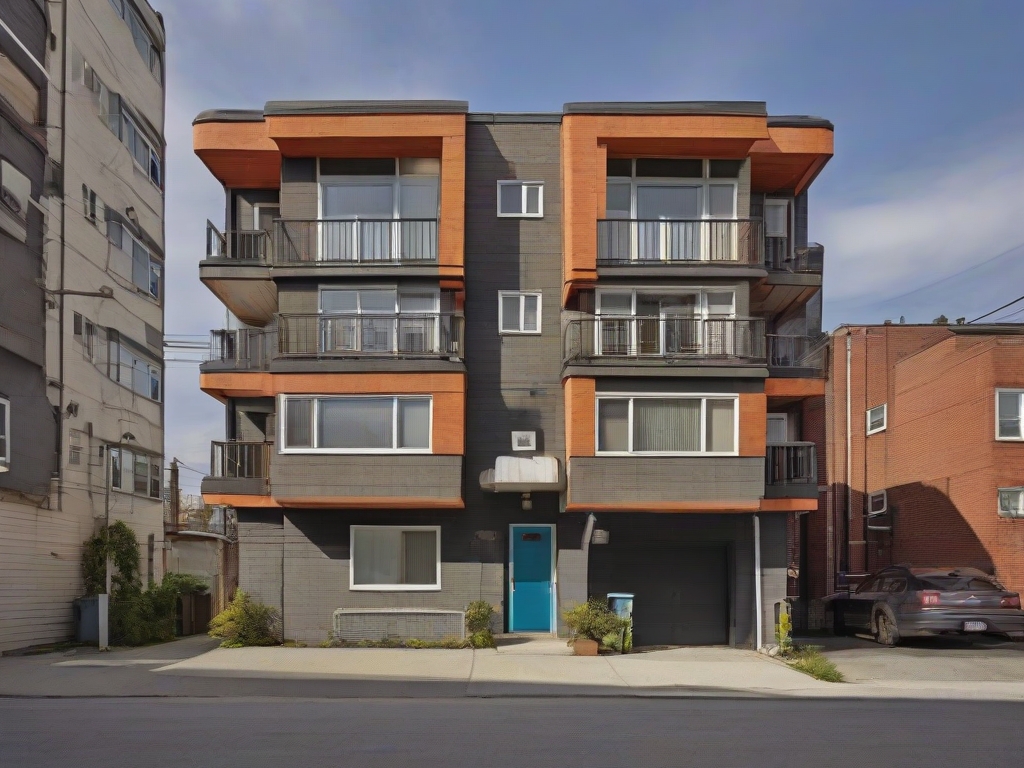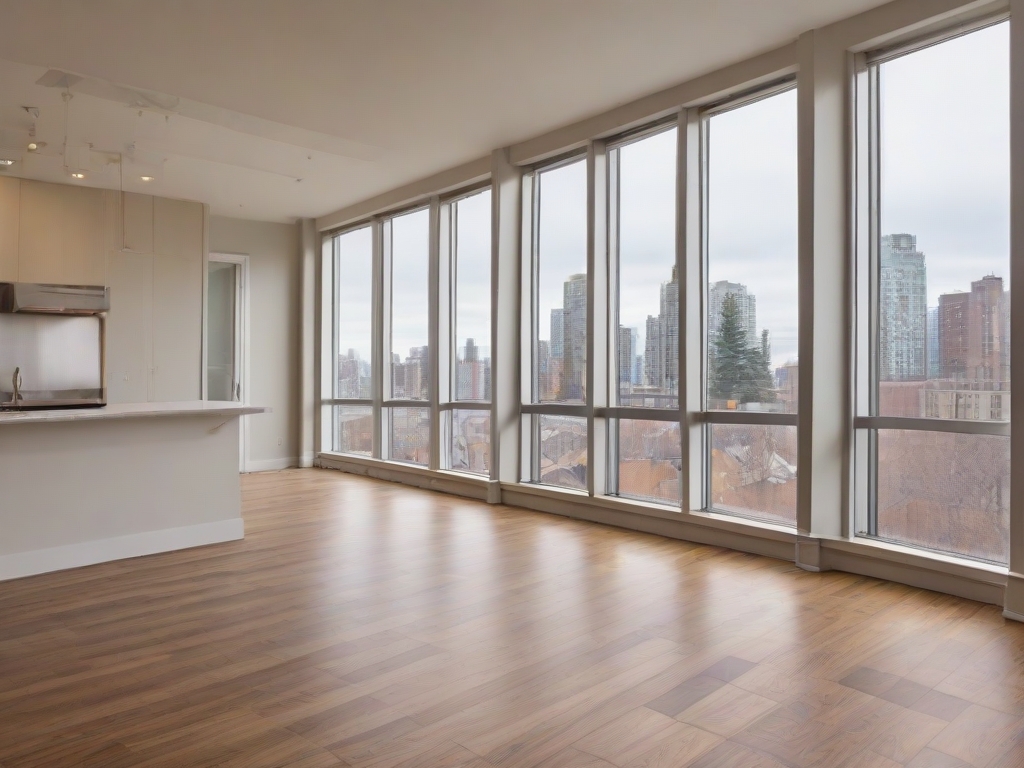Ottawa’s real estate landscape is a complex and dynamic environment, shaped by a myriad of factors that influence both the housing market and rental prices. In recent years, the city has experienced significant changes in its real estate dynamics, particularly in terms of supply and demand. These changes have had profound effects on market rents, impacting both landlords and tenants across the region. Understanding the intricacies of Ottawa’s property market requires a deep dive into the concepts of supply and demand, and how they interact to shape the current and future states of housing in Canada’s capital.
The essence of Ottawa’s real estate market can be captured through an examination of its low vacancy rates, which are a critical indicator of market health and trends. In 2022, the Canada Mortgage and Housing Corporation (CMHC) reported a decrease in Ottawa’s vacancy rate to 2.1%, down from 3.4% in the previous year. This decline is not just a number; it reflects a tightening market where the demand for rental housing increasingly outstrips supply. Such a scenario poses significant challenges and opportunities for various stakeholders, including investors, policymakers, and residents.
In the following sections, we will explore the fundamental principles of supply and demand in real estate, analyze Ottawa’s low vacancy rates, delve into the impacts on market rents, and finally, look forward to the future of this vibrant market. By the end of this article, readers will gain a comprehensive understanding of the factors driving Ottawa’s real estate market, particularly in the context of rental properties, and what this means for the city’s future.

The Role of Supply and Demand in Real Estate
Understanding the Basics
At the heart of any real estate market, including Ottawa’s, are the fundamental economic principles of supply and demand. These principles dictate the availability of properties and the prices that consumers are willing to pay. In simple terms, when the supply of homes exceeds demand, prices tend to fall. Conversely, when demand outstrips supply, prices usually rise. This delicate balance between availability and desire is what shapes the dynamics of the real estate market.
Supply in Ottawa’s Real Estate Market
In Ottawa, the supply side has seen significant fluctuations. According to the TD Economics report, new listings in Canada increased for six consecutive months through September, marking a 35% surge. However, starting from a low base, these gains only brought supply back to long-term averages. In Ontario, of which Ottawa is a part, listings have risen even higher, surpassing long-term averages. This indicates that higher interest rates and economic pressures might be influencing homeowners to sell, thus increasing supply.
Demand Dynamics
Demand, on the other hand, is driven by various factors including population growth, economic conditions, and interest rates. Ottawa, in particular, has seen strong demographic and economic conditions supporting rental demand. The return of students to classrooms, as noted in the CMHC report, has particularly impacted areas like Sandy Hill and Lowertown, close to the University of Ottawa, where vacancy rates dropped significantly.
Interplay of Supply and Demand
The interplay of supply and demand in Ottawa is exemplified by the changing vacancy rates and rental prices. As the CMHC report highlights, Ottawa’s overall vacancy rate fell to 2.1% in 2022, down from 3.4% in 2021. This decrease in vacancy rates, coupled with a rise in new listings, indicates a market adjusting to various economic pressures.

Analysis of Ottawa’s Low Vacancy Rates
Overview of Current Trends
One of the most telling indicators of the health and dynamics of a real estate market is the vacancy rate. In Ottawa, the vacancy rate has shown a significant decline, falling to 2.1% in 2022 from 3.4% in the previous year, as per the CMHC report. This decline is not merely a statistical anomaly but a reflection of the tightening housing market in Canada’s capital.
Factors Contributing to Low Vacancy Rates
Several factors contribute to this decreasing trend in vacancy rates. Firstly, strong demographic and economic conditions in Ottawa have bolstered rental demand. The city’s growing population, fueled by factors such as immigration and the return of students to universities, has increased the demand for rental housing. Specifically, neighborhoods like Sandy Hill and Lowertown, which are in proximity to the University of Ottawa, have seen some of the most significant drops in vacancy rates.
Moreover, the pandemic’s impact cannot be overlooked. The shift in work and lifestyle patterns during and post-pandemic has altered housing preferences and demands. As people sought more space and comfort for remote work, the demand for certain types of rental properties increased.
Regional Variations
It’s also important to note the regional variations within Ottawa. While the overall vacancy rate stands at 2.1%, areas like the downtown core and neighborhoods near Carleton University, such as The Glebe and Old Ottawa South, have even lower rates, indicating a high demand for rentals in these areas. On the other hand, communities like Alta Vista, despite having a higher vacancy rate than other sectors, have seen a significant drop from the previous year.
Impact on Rental Market
This tightening of the rental market has direct implications on rental prices. The CMHC report notes that the average rent for a two-bedroom apartment in Ottawa rose by 4.8% over the past year. The reduced vacancy rates, combined with rising rents, indicate a market where demand is outpacing the supply of rental units.

Impact of Supply and Demand on Market Rents in Ottawa
Rising Rents Amidst Tightening Supply
The interplay between supply and demand in Ottawa’s real estate market is a critical factor shaping rental prices. As supply struggles to keep up with increasing demand, a direct consequence is the rise in market rents. The CMHC report highlights a notable increase in the average rent for a two-bedroom apartment, which rose by 4.8% over the past year. This trend is particularly pronounced in areas with extremely low vacancy rates, like the downtown core and neighborhoods close to major universities.
Economic and Demographic Pressures
Economic and demographic factors are pivotal in driving this demand. Ottawa’s strong job market, coupled with its status as an educational and governmental hub, attracts a diverse population, including students, professionals, and families, all competing for a limited pool of rental units. The increase in demand, fueled by these demographic shifts, puts upward pressure on rents, especially in popular areas.
The Role of Interest Rates
Interest rates also play a significant role. As highlighted in the TD Economics report, the recent hikes in interest rates have impacted the real estate market, including the rental sector. Higher rates can discourage home buying, pushing more people towards renting, thus increasing demand for rental properties. Additionally, rising rates can lead homeowners to sell properties, affecting the supply side of the market.
Government Policies and Their Effect
Government policies, both at the federal and provincial levels, have aimed at addressing these challenges. Measures like removing the GST on purpose-built rental construction and supporting the construction of secondary suites are steps towards easing the supply constraints. However, these policies take time to materialize in the market, and their full impact on rental prices remains to be seen.
Outlook for Renters and Investors
For renters, the current market scenario translates to steeper rents and fewer choices. For investors and landlords, however, this could mean higher returns on rental properties. The key challenge for policymakers and stakeholders is to balance these competing interests while ensuring a healthy and sustainable rental market.

Future Outlook and Policy Implications
Anticipating Market Trends
The future of Ottawa’s real estate market, particularly its rental segment, is poised at a crucial juncture. As per the TD Economics report, there is an expectation of continued fluctuation in home sales and prices into 2024, influenced by interest rate trends and economic conditions. This volatility is likely to have a ripple effect on the rental market as well.
Population Growth vs. Housing Supply
One of the most significant factors shaping this future is the balance between population growth and housing supply. Ottawa, like many Canadian cities, faces the challenge of accommodating a growing population in the face of a housing supply that struggles to keep pace. The TD report indicates that Canada’s population is expected to swell considerably, intensifying demand for housing and, by extension, for rental properties.
Government Initiatives and Their Impact
In response to these challenges, various government initiatives at the federal, provincial, and municipal levels are underway. Efforts to streamline zoning regulations, encourage the construction of secondary suites, and remove tax barriers for purpose-built rental construction are commendable steps. However, the effectiveness of these measures in alleviating supply constraints and impacting rental prices will be a key area to watch.
Balancing Affordability and Market Health
The overarching goal for policymakers and stakeholders in the Ottawa real estate market is to strike a balance. Ensuring affordability for renters while maintaining a healthy, sustainable market for investors and homeowners is a delicate act. This balance is crucial for the long-term vitality of Ottawa’s real estate market.
Preparing for the Future
For potential renters, investors, and policymakers alike, staying informed and adaptive to these changing dynamics will be vital. Understanding the interplay of supply and demand, demographic trends, and policy impacts is key to navigating the future of Ottawa’s property market.

As we’ve explored throughout this article, the interplay of supply and demand in Ottawa’s real estate market is a complex and multifaceted issue. The current trends of low vacancy rates, rising rental prices, and fluctuating supply dynamics underscore the challenges and opportunities within this vibrant market. These elements are not just indicators of current market conditions but are also predictive of future trends.
Understanding these dynamics is crucial for anyone involved in Ottawa’s real estate market, whether as renters, investors, homeowners, or policymakers. The insights gained from analyzing these trends can guide informed decisions and strategies. For renters, this knowledge is key to navigating the market and finding suitable housing options. For investors and homeowners, it provides a framework to assess potential returns and risks.
The role of government policies, aimed at alleviating supply constraints and ensuring a balanced market, is pivotal. The effectiveness of these policies in shaping a sustainable and affordable housing market will be crucial in the coming years. As Ottawa’s population continues to grow and the city evolves, the real estate market will undoubtedly undergo further changes.
In conclusion, staying adaptive and informed is essential in navigating Ottawa’s real estate market. By understanding the intricate dance of supply and demand, and its impact on market rents, stakeholders can better prepare for the challenges and opportunities that lie ahead in Canada’s capital city.
